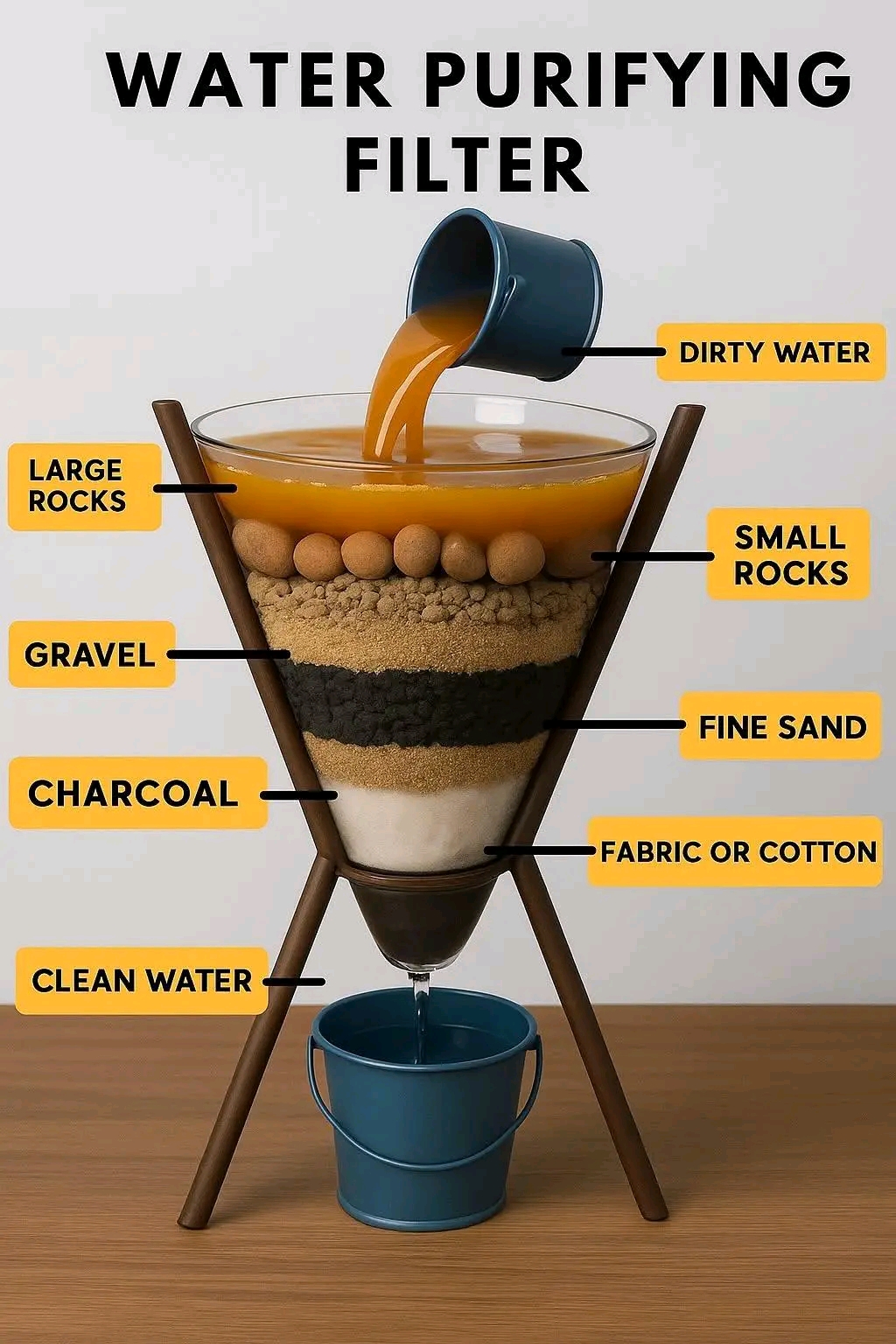Introduction
Clean water is vital to human health and survival. Whether you’re camping, experiencing an emergency, or living off the grid, having access to purified water is essential. This DIY water purification filter is an easy, effective, and educational way to understand natural filtration using everyday materials.
Origin and Cultural Significance
The concept of filtering water using natural materials dates back centuries. Indigenous cultures across the world used charcoal, sand, and gravel to purify drinking water. These traditional techniques laid the foundation for modern filtration systems. Today, such filters are not only used for survival but also as a sustainable approach to water purification in low-resource settings.
Ingredients & Quantity
To make this DIY filter, gather the following materials:
- 1 clean plastic bottle (cut in half to create a funnel)
- 1 cup large rocks
- 1 cup small pebbles
- 1 cup gravel
- 1 cup activated charcoal
- 1 cup fine sand
- 1 piece of clean cotton fabric or a cotton ball layer
- Dirty or cloudy water (for testing)
Optional Additions
- Coffee filters for extra fine filtration
- Cheesecloth or mesh instead of cotton
- Purification tablets (post-filtration treatment)
- Boiling the water after filtering to ensure complete disinfection
Tips for Success
- Rinse all filtration materials (sand, gravel, rocks) before use to remove dust and dirt.
- Layer materials evenly to avoid channeling, where water bypasses layers.
- Replace charcoal regularly—it becomes saturated over time and loses effectiveness.
- Don’t rush the filtration. Allow water to drip slowly for better purification.
- Always boil or chemically treat water if you’re uncertain about its microbial safety.
Instructions
- Prepare the bottle: Cut a plastic bottle in half. Invert the top half to form a funnel and place it into the bottom half to collect filtered water.
- Add cotton or fabric: Line the neck of the funnel with cotton or a piece of cloth. This acts as the final filter layer.
- Add fine sand: Pour a layer of fine sand over the fabric. It removes micro-particles.
- Add charcoal: Add crushed activated charcoal above the sand to remove odors, toxins, and bacteria.
- Add gravel: Pour in gravel to catch finer debris.
- Add small pebbles: This layer further removes mid-sized particles.
- Add large rocks: Top it off with large rocks to block big debris like leaves and insects.
- Filter water: Slowly pour dirty water into the top. Let it pass through all layers. Collect the clean water in the bottom half.
- Post-treatment: Boil the filtered water or use purification tablets before drinking.
Description
This multi-layered DIY water purification filter mimics natural water filtration processes. Each material targets specific impurities, transforming cloudy, debris-filled water into clear, safer water. While not a full replacement for advanced filters, it is an effective emergency or learning solution.
Nutritional Information
Water itself doesn’t contain calories, fats, or vitamins. This filter removes physical and some chemical contaminants but doesn’t alter the water’s nutritional composition. However, it significantly reduces exposure to harmful pollutants, contributing to overall health.
Conclusion
A homemade water purification filter is a practical, insightful project that brings science, survival, and sustainability together. With easily accessible materials, anyone can create an efficient filter and gain a better understanding of how water can be cleaned naturally.
Recommendation
This DIY filter is ideal for educational purposes, outdoor activities, and emergency kits. It’s cost-effective, environmentally friendly, and a great step toward water consciousness. However, always pair it with boiling or chemical purification for the safest results.
Embracing Healthful Indulgence
Purified water is more than a necessity—it’s a commitment to your health and well-being. Embrace this simple method as a mindful practice, connecting with nature’s way of cleansing and appreciating the life-giving force of clean water.

